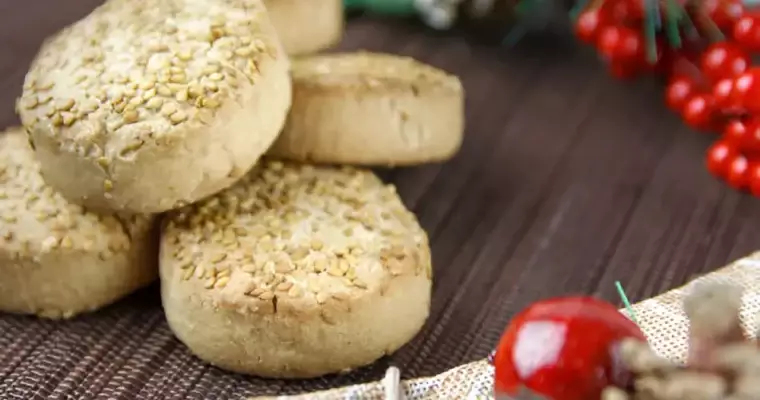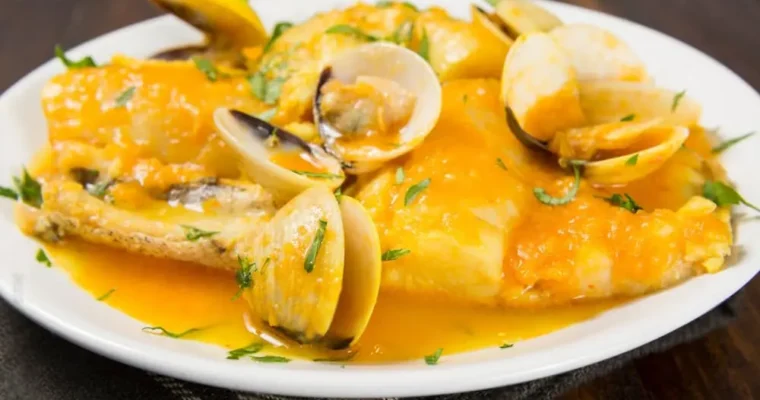As Christmas approaches, it’s time to put on our aprons, fire up the stove, and dive into holiday baking! For lovers of sweets and tradition, Andalusian alfajores are an essential treat this season. This delightful, spiced confection has deep roots in Spanish culture, dating back to 1492. It’s believed that Andalusian alfajores, rich in energy-dense ingredients, accompanied explorers to the Americas—a bit like history’s first energy bars!
Alfajores are native to Andalusia, and while they share the spotlight with turrón and mantecados, they’re a truly unique indulgence. Their iconic blend of honey, almonds, hazelnuts, and spices gives them that distinct aroma and flavor, making them a special addition to any holiday gathering. Andalusia’s own Medina Sidonia, famed for its confectionery traditions, has even preserved the alfajores recipe over centuries, securing an official Protected Geographical Indication (PGI) label to ensure their authenticity.
Table of Contents
Key Ingredients for Authentic Andalusian Alfajores
The magic of Andalusian alfajores lies in a few essential ingredients, all of which come together to create an irresistible mix of textures and flavors. Here’s what you’ll need:
- Honey: This is the primary sweetener, bringing warmth and moisture.
- Almonds and Hazelnuts: Roasted and ground, these nuts give alfajores a rich, nutty texture.
- Spices: Cinnamon, cloves, and sometimes anise, add the warm aroma and flavor typical of this dessert.
- Breadcrumbs: A unique ingredient that provides structure and a melt-in-your-mouth consistency.
It’s fascinating to think that, although other sweets have gained more fame, the town of Medina Sidonia has kept the traditional recipe alive for centuries, becoming Andalusia’s alfajor capital.
Step-by-Step Recipe for Traditional Andalusian Alfajores
Here’s how to make Andalusian alfajores just like they’ve done for generations. These are simpler to prepare than many other holiday treats and don’t require baking—ideal for busy holiday schedules.
Ingredients:
- 1 cup honey
- 1/2 cup ground almonds
- 1/2 cup ground hazelnuts
- 1/2 teaspoon cinnamon
- 1/4 teaspoon cloves
- 1 cup breadcrumbs
- Powdered sugar (for dusting)
Instructions:
- In a saucepan, warm the honey over low heat until it becomes more fluid.
- Add the ground almonds, hazelnuts, cinnamon, and cloves, stirring to combine.
- Gradually fold in the breadcrumbs, mixing until the dough holds together.
- Let the dough cool slightly, then shape it into small, round discs or logs.
- Dust with powdered sugar before serving.
I remember trying this recipe with a few friends, and everyone was surprised at how easy it was to create such a rich, aromatic treat. Plus, they’re sure to impress holiday guests with their unique flavor!
Variations of Alfajores Across Andalusia
Like many traditional recipes, alfajores have regional variations throughout Andalusia. Some versions use more anise, while others add orange zest for a citrusy twist. Growing up, the alfajores I enjoyed were spiced and had larger almond chunks. It’s interesting how, despite these differences, every version stays true to the essential ingredients that make them an alfajor.
In some families, a thicker dough closer to mantecados is used, while others keep to a softer, crumbly texture. These small differences add a touch of personality and are a lovely way to honor family recipes each year.
Curiosities and the History of Alfajores in Spain
It’s remarkable to think that Andalusian alfajores, as rich in history as they are in flavor, have persisted for centuries. Alfajores date back to Al-Andalus and evolved from Arabic and Spanish influences. Over the years, they’ve become a specialty of Medina Sidonia, a small town in Cádiz, which produces alfajores so authentic that they’ve been awarded the Protected Geographical Indication (PGI) label.
There was a time when these treats nearly faded into obscurity. Their distinctive, spiced flavor wasn’t as universally popular as other holiday treats like turrón. Thanks to towns like Medina Sidonia, we can still enjoy this culinary heritage today.
Health Benefits of Andalusian Alfajores
Not only are these alfajores delicious, but they’re also packed with natural, energy-boosting ingredients. The almonds and hazelnuts are great sources of protein and healthy fats, while honey provides natural sweetness and antioxidants. Spices like cinnamon and cloves offer anti-inflammatory properties, making these treats a more nutritious choice compared to refined-sugar sweets.
Their blend of ingredients makes them ideal as an energy snack, and it’s not surprising they were seen as early “energy bars,” sustaining explorers and travelers alike.
How to Impress Guests with Homemade Alfajores
Serving these homemade alfajores is a surefire way to impress. Arrange them on a festive plate dusted with powdered sugar, or wrap them individually in wax paper for an authentic touch. With their historical charm and rich flavors, they’re sure to spark conversations and please guests. As you said, they might not be everyone’s cup of tea at first, but they leave a lasting impression!
FAQs about Andalusian Alfajores
Q: How should I store alfajores? A: Store them in an airtight container in a cool place for up to two weeks. They taste better after a day or two as the flavors meld together.
Q: Can I make substitutions? A: Yes! You can substitute honey with agave for a vegan option, and try walnuts instead of hazelnuts for a different flavor.
Q: Do I need special equipment to make alfajores? A: No oven is required! Just a saucepan and a mixing bowl, making them easy to prepare.
Related Spanish Christmas Recipes to Try
If you’re interested in exploring more Spanish Christmas desserts, here are a few favorites that pair wonderfully with alfajores:
- Mantecados: A classic Spanish shortbread with a crumbly texture, made from lard and flavored with cinnamon or lemon zest.
- Polvorones: Another crumbly cookie often compared to mantecados, but with an even softer texture and a dusting of powdered sugar.
- Turrón: Spanish nougat made with almonds and honey, available in hard (Alicante) and soft (Jijona) varieties.
- Mazapán (Marzipan): A classic Spanish treat made from almonds and sugar, shaped into small figures, and often enjoyed during the holidays.
These treats not only complement alfajores but also add variety to a holiday dessert spread, each bringing a unique taste of Spanish tradition to the table.
Conclusion: Celebrating Christmas with an Ancient Delight
Andalusian alfajores are more than just a treat—they’re a bite of history, a symbol of Spanish heritage, and a reminder of Andalusia’s rich culinary traditions. These sweet, spiced delights offer a unique flavor profile and bring warmth to any holiday celebration. With the right ingredients and a bit of care, you’ll have a dessert that’s as meaningful as it is delicious, perfect for sharing with loved ones.

5 Steps Authentic Andalusian Alfajores Recipe
Ingredients
- 250 g Honey
- 150 g Toasted almonds (can be whole and then crushed)
- 150 g Toasted hazelnuts (can also be whole and crushed)
- 100 g Breadcrumbs
- 1 tsp Ground cinnamon
- ½ tsp Ground Cloves
- Zest of 1 lemon (optional, for a fresh citrus note)
- Powdered sugar for dusting
Instructions
- Prepare the Ingredients:Crush the almonds and hazelnuts until you achieve a coarse powder texture. Avoid over-processing them to prevent them from turning into a paste.Grate the lemon if you want to add a citrus touch (optional).
- Cook the Honey and Spices:In a large pan or heavy-bottomed pot, heat the honey over low heat, stirring constantly until it is well liquefied and begins to bubble lightly (about 5 minutes).Add the cinnamon, cloves, and lemon zest, mixing well so the spices integrate into the honey.
- Incorporate the Nuts and Breadcrumbs:Add the ground almonds and hazelnuts to the hot honey. Mix well to coat the nuts with honey.Gradually incorporate the breadcrumbs while continuing to mix. The dough should be thick and manageable, not too dry or sticky. If it seems too dense, you can add a little more honey.
- Shape the Alfajores:Remove the mixture from the heat and let it cool a bit to handle it better. When it is warm, take small portions and shape them into a cylinder or disc.
- Decorate with Powdered Sugar before resting: Once shaped, dust the alfajores with powdered sugar for a decorative and traditional touch.The alfajores improve with time as the flavors meld. You can let them rest for at least 24 hours before serving.Store them in an airtight container in a cool place. They last up to two weeks.








